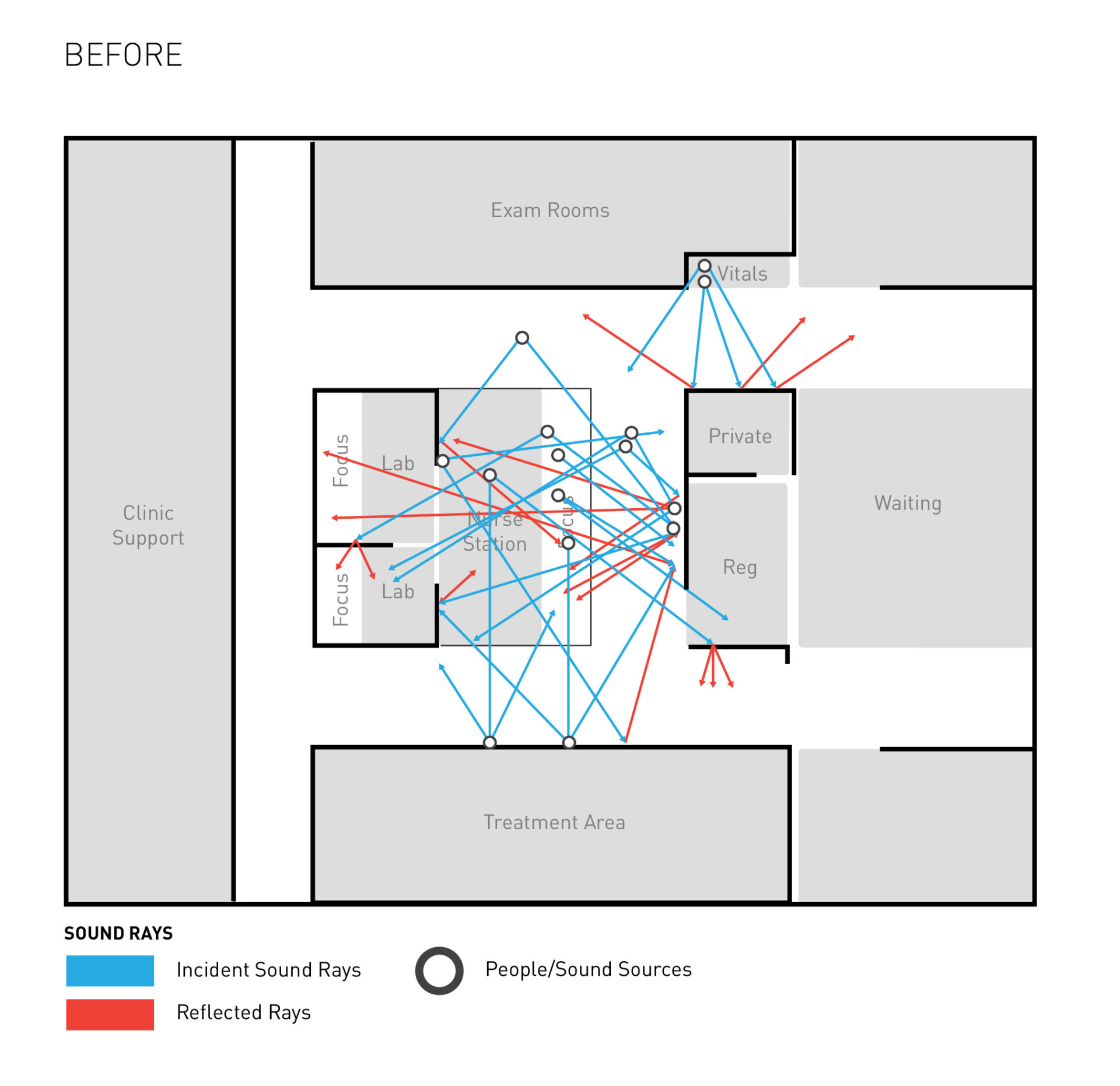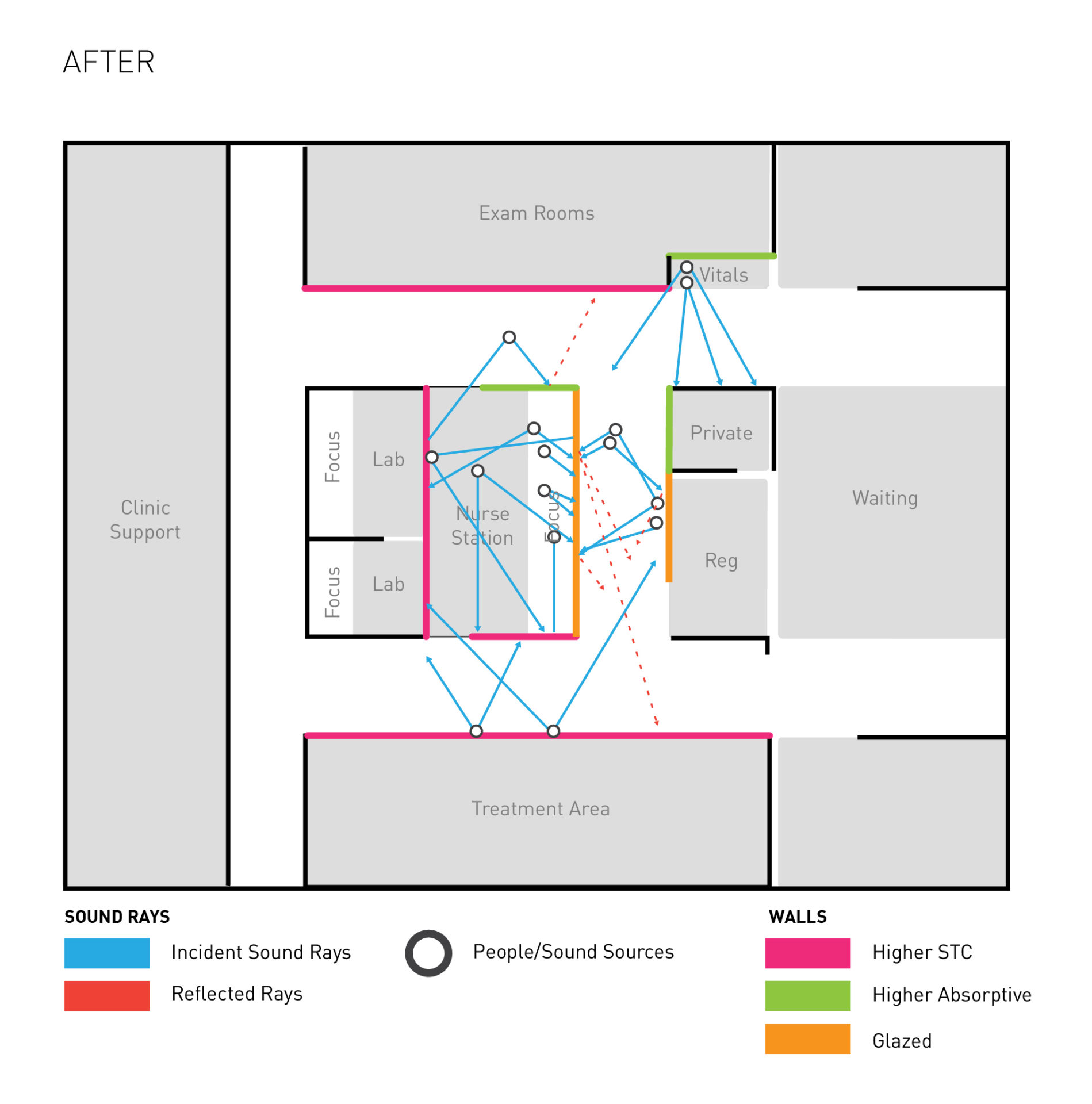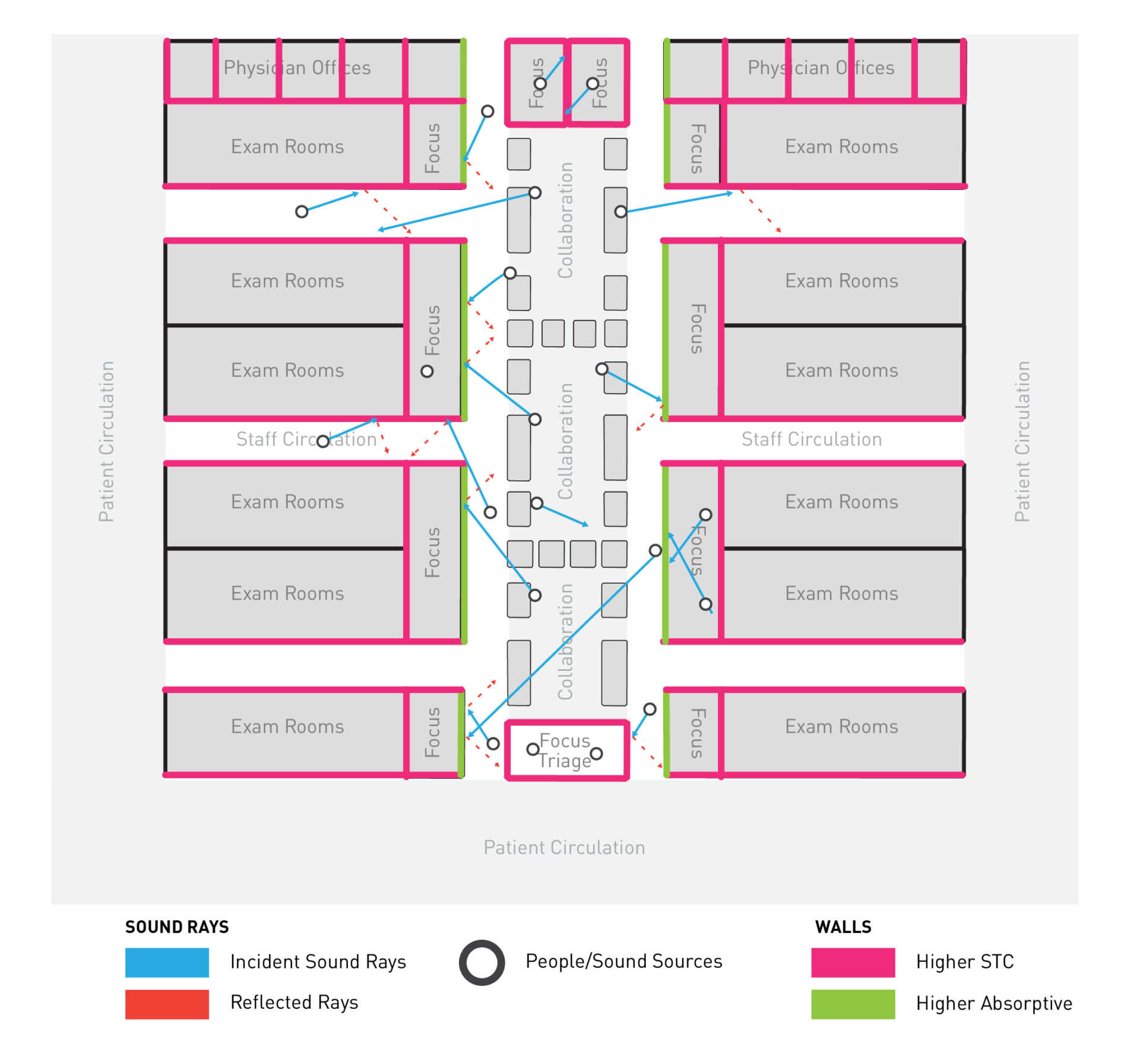Insights
Nov 25, 2019 _ insights
(Mitigating) the Sound & the Fury in Healthcare Environments
Along with many other businesses, medical offices, clinics, and hospitals have been moving toward more open workplace environments to promote multidisciplinary collaboration. This is an encouraging development. Healthcare staff should not be siloed in their own unit. From learning hospitals to multidisciplinary care centers, healthcare is a collaborative field, so it’s important that the spaces we design support that. Unfortunately, as healthcare design embraces the creation of collaborative spaces, we also need to deal with an unintended consequence: NOISE.
We experience built environments with all our senses, so we need to design them for all our senses, especially our sense of hearing. Research indicates that sound ambiance not only affects patient healing processes but also affects the quality of staff’s decision making. In hospital environments, there are intellectual activities and therapeutic procedures that require concentration. Noisy environments may interfere directly in the quality of diagnosis and the therapeutic processes. As healthcare designers we have the responsibility to think beyond functionality and workflow in creating user experiences. Taking the proper steps to improve the acoustical environment in healthcare settings can improve patient comfort, privacy and dignity while fostering regenerative sleep patterns that aid the healing process.


For healthcare staff, reducing ambient noise can improve comfort, efficiency and accuracy, while reducing stress, which not only takes a toll on healthcare workers but shapes health outcomes of those in their care. Previously these had been considered “soft values” in design, but more and more they are being seen as “hard values” that deliver positive economic benefits.
Staff work areas in healthcare settings, especially nurse workstations, are high-paced environments. Nurses are running in and out, multiple conversations are going on at once, background equipment buzzes and beeps. There are alarms, pages, phones ringing, HVAC noises, and more vying for healthcare workers’ attention. According to the Center for Health Design, this situation not only makes communication difficult, which could lead to medical errors, but it also increases stress, contributing to fatigue, emotional exhaustion and staff burnout.
According to the World Health Organization (WHO), the noise levels of patient care areas shouldn’t exceed 50 dB (roughly, the volume of a conversation). Ideally, a nurse station would be closer to 40-45 dB, which would be comparable to the ambiance of a library. Unfortunately, research shows that the typical decibel level of hospital nurses’ stations is closer to 78 dB (think: the sound of traffic on a busy city street).
To avoid harm to staff and patients, healthcare designers and their clients need to do a better job of providing a healthy acoustical environment. How can we do that?

While no one needs to hear the hospital’s HVAC system, many sources of noise in a healthcare environment are unavoidable. Depending on what they’re doing at the time, for instance, it’s important that healthcare workers be aware of pages, alarms, or ringing phones. We wouldn’t want to design a space that would mute those noises, even if we could.
But by working with our clients to understand the different types of tasks that healthcare workers need to accomplish throughout a shift—and the levels of collaboration and concentration they require—we can create differentiated work zones to support these tasks. Fairly typical kinds of work zones in a hospital setting might include:
- Very Quiet Zones for more focused work/less communication (e.g., dictation space, physician offices, meds area, triage). The sound level here should be ~40 dB (library ambiance)
- Quiet Zones for one-to-one or small group communication (e.g., team huddle spaces, meeting rooms). The sound level here should be ~45 dB (quiet suburb)
- Relatively Noisy Zones, where multiple interactions can take place simultaneously (e.g., nursing stations). The sound level here should be ~50 dB (the hum of a refrigerator)
From carpeting to different wall constructions to absorptive ceiling clouds, the necessary acoustic treatments and strategies are available. We just need to layer acoustic design into the larger design process to ensure that we articulate the kinds of work zones needed, to ensure that we provide those spaces with the acoustic environment they need.
The health and wellbeing of our clients’ patients and staff depends on doing so.
Read an expanded version of Sayali’s insight in the Academy of Architecture for Health magazine.
Learn more about Sayali.




